Navigate the mystery of the 7 Candlesticks in the Bible, symbols of divine light guiding believers through darkness.
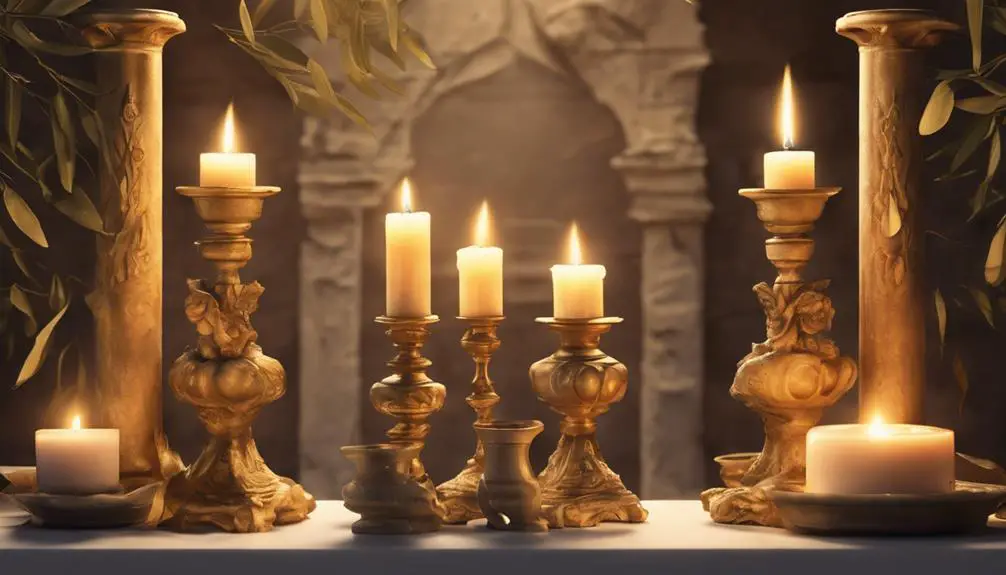
7 Candlesticks in the Bible
In the flickering light of history, the 7 candlesticks of the Bible stand as symbols of illumination, inspiration, and revelation. You'll find these candlesticks not just lighting up the physical spaces of temples and visions but also illuminating the spiritual journey of countless believers.
From the golden lampstand of Exodus to the mystical candlesticks in Revelation, each holds a story that bridges the divine with the earthly. As you explore these emblematic lights, you'll uncover layers of meaning that resonate far beyond their initial biblical context.
What secrets do they hold, and how do they continue to shine a light on our understanding of faith, wisdom, and divine presence? Let's embark on this journey together, and you might just find that these ancient symbols illuminate pathways in your own life.
Key Takeaways
- Candlesticks in the Bible symbolize divine wisdom, guidance, and the eternal light of God.
- The Menorah, a key biblical candlestick, signifies enduring faith and universal enlightenment beyond strictly religious contexts.
- Biblical narratives employ candlesticks to highlight themes of wisdom, revelation, and the pursuit of understanding.
- Candlesticks serve as reminders of God's unbroken relationship with humanity, emphasizing vigilance and divine enlightenment.
The Golden Lampstand of Exodus
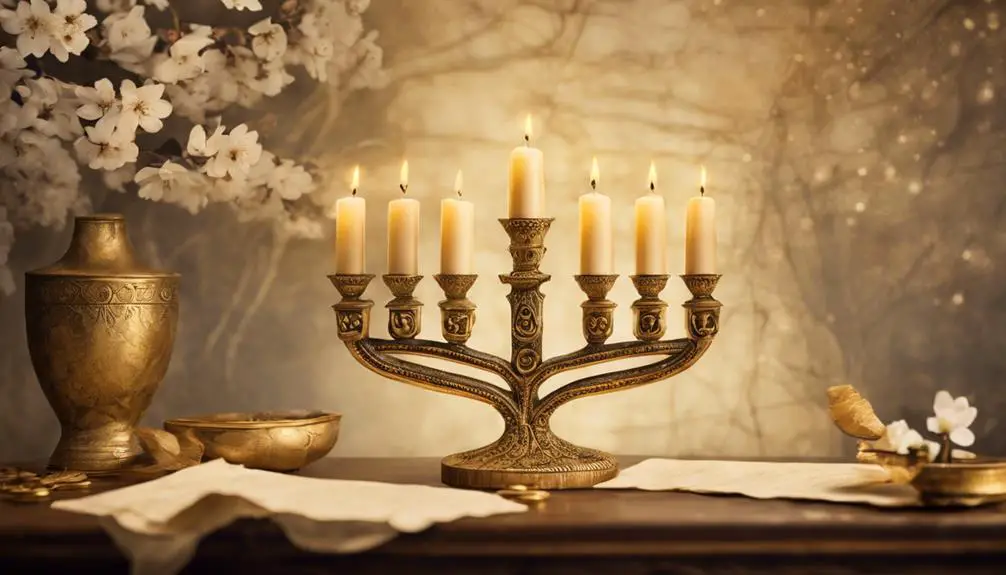
In the Book of Exodus, the Golden Lampstand, or Menorah, stands as a symbol of divine enlightenment and guidance, meticulously crafted from pure gold according to God's instructions to Moses. This artifact, representing not merely a physical object but a profound spiritual emblem, is laden with craftsmanship details and material significance that merit a closer examination.
The construction of the Menorah was detailed with exceptional precision, indicating the importance of skill and dedication in its making. You'll find that it was fashioned from a single piece of gold, a technique that underscores the unity and integrity of the piece, as well as the craftsmanship involved. The Menorah's design featured a central shaft with six branches, three on each side, each adorned with almond blossoms, knobs, and flowers. This intricate detailing points to a high level of artistry and a deep understanding of the materials at hand. The choice of gold as the material wasn't arbitrary; its incorruptibility and radiance symbolize the pure, everlasting light of God.
The material significance of the Menorah extends beyond its immediate visual and aesthetic appeal. Gold, being a precious and enduring metal, signifies the Menorah's sacred status and the eternal nature of the light it represents. This light, in turn, serves as a constant reminder of God's presence among His people, illuminating the path of righteousness and wisdom.
In analyzing the Golden Lampstand of Exodus, one can't help but appreciate the profound interplay between its physical composition and spiritual symbolism. The craftsmanship details and the material significance woven into the Menorah's design reflect a deep, abiding connection with the divine, underscoring the broader themes of guidance, purity, and enlightenment that permeate the biblical narrative.
Zechariah's Vision of the Lampstand
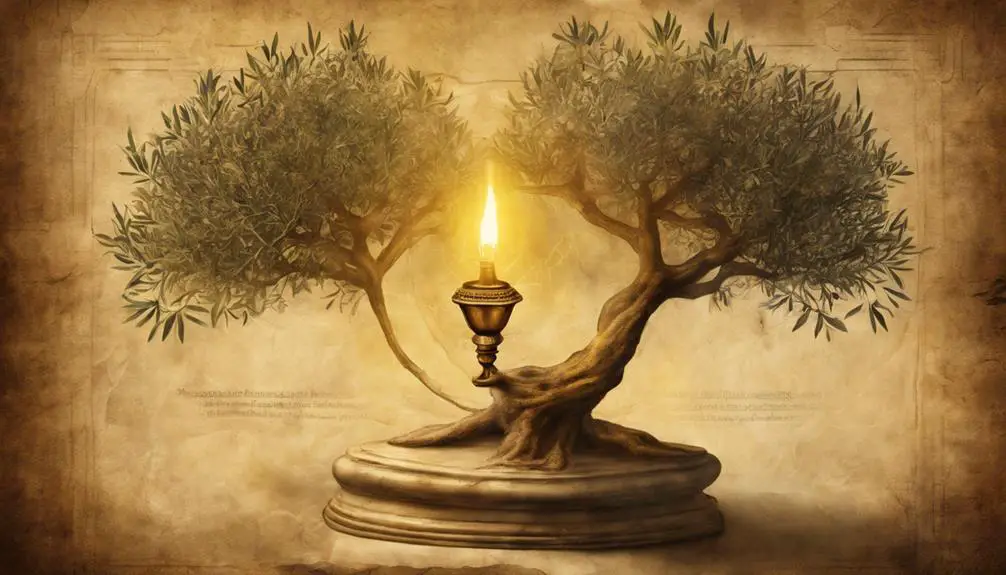
Building on the understanding of the Menorah's significance, Zechariah's vision of the lampstand offers a complex layer of prophetic insight and spiritual symbolism. Unlike the Menorah in Exodus, Zechariah's lampstand is accompanied by two olive branches, which supply oil directly to the lamps. This vision, found in Zechariah 4, is rich in symbols and requires angelic interpretation to unlock its meanings.
The angel plays a crucial role in deciphering the vision for Zechariah, emphasizing the divine message behind the imagery. The olive branches signify the anointed ones, standing by the Lord of the whole earth, symbolizing God's chosen instruments for the restoration and enlightenment of His people. This vision transcends its immediate historical context, suggesting a perpetual flow of God's spirit and guidance.
Analyzing this vision, it's clear that the lampstand and the olive branches together signify a divine partnership, highlighting the continuous and direct sustenance from God to His people. The angel's interpretation underscores the theme of reliance on God's Spirit rather than human might or power.
To help you enjoy what is written, here's a table summarizing key elements:
Element |
Symbolism |
Interpretation by Angel |
|---|---|---|
Lampstand |
God's presence and light |
Continuous divine guidance |
Olive Branches |
Anointed ones |
Direct sustenance and partnership |
Angel |
Divine messenger |
Clarifies and interprets vision |
This vision, steeped in symbolism and interpreted through divine intervention, offers profound insights into God's ways of communication and sustenance, reinforcing the importance of spiritual reliance over physical strength.
The Tabernacle's Sevenfold Light
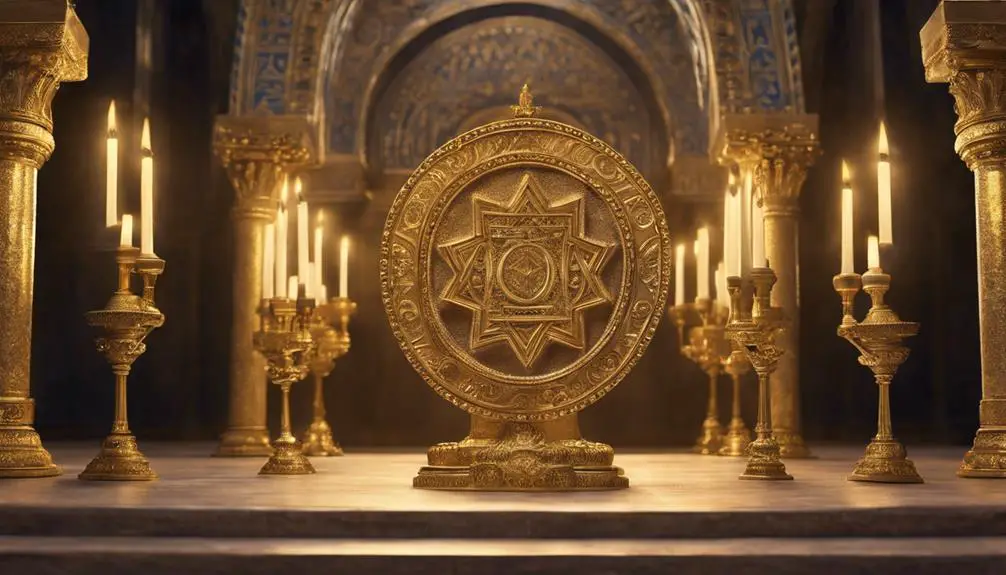
Exploring the Tabernacle's sevenfold light reveals a profound connection between divine presence and the community's spiritual enlightenment, underscoring the intricate symbolism within this sacred architecture. The seven branches of the Menorah, meticulously crafted from pure gold, stand as a testament to God's command for precision and beauty in worship. This craftsmanship detail isn't merely about aesthetic appeal; it symbolizes perfection, completeness, and the illumination of God's word in the lives of His people.
The oil significance in this context can't be overstated. Pure, beaten olive oil fueled the Menorah, serving as a constant reminder of the purity and dedication expected of the Israelites in their service to God. The process of obtaining this oil—through pressing—parallels the trials and tribulations the community undergoes, leading to spiritual growth and enlightenment. This oil, burning steadily night and day, signifies an unbroken relationship with God, a perpetual light guiding the community's path.
Moreover, the positioning of the Menorah within the Tabernacle, opposite the table of Showbread, creates a spatial dialogue between the word of God (the light) and the sustenance provided by God (the bread). This arrangement encapsulates the holistic sustenance of the community—both spiritual and physical.
Revelation's Mystical Candlesticks
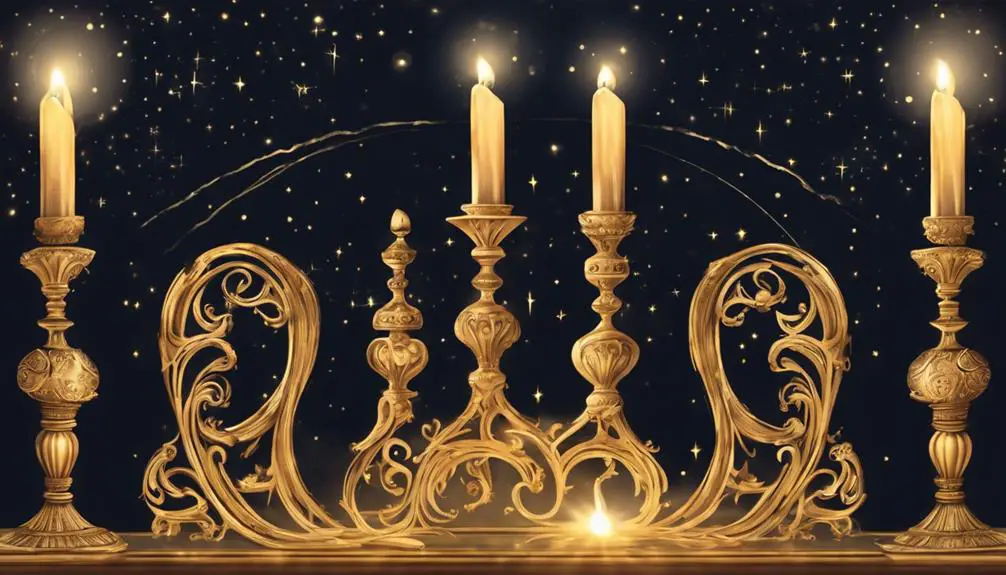
Delving into the Book of Revelation, we encounter the enigmatic imagery of seven candlesticks, symbolizing the seven churches that are integral to understanding the early Christian community's challenges and divine guidance. This apocalyptic symbolism isn't merely decorative but serves as a profound tool for theological reflection. The candlestick metaphors, in this context, aren't just about light but about presence, vigilance, and the divine amidst the believers.
The seven candlesticks, as described, aren't random; each one is carefully chosen to represent a specific church, each with its unique set of virtues and vices. This choice underscores the diversity within the early Christian communities and the tailored messages of encouragement, rebuke, and prophecy they received. The imagery is rich with layers of meaning, inviting you to ponder the multifaceted relationship between the divine and the ecclesiastical bodies.
In analyzing these candlestick metaphors, one must appreciate their dual role in Revelation. First, they serve to illuminate the spiritual state of each church, shedding light on both the commendable and the condemnable. Secondly, they symbolize the constant presence of God among His people, even in times of persecution and moral decay. This presence is both a comfort and a call to vigilance for the believers.
The apocalyptic symbolism of Revelation's mystical candlesticks, therefore, is a powerful reminder of the enduring nature of divine guidance, the necessity for spiritual vigilance, and the profound connection between the heavenly and the earthly realms. It's a vivid portrayal that serves not only as historical insight but also as a timeless spiritual allegory.
The Menorah: Symbol of Judaism
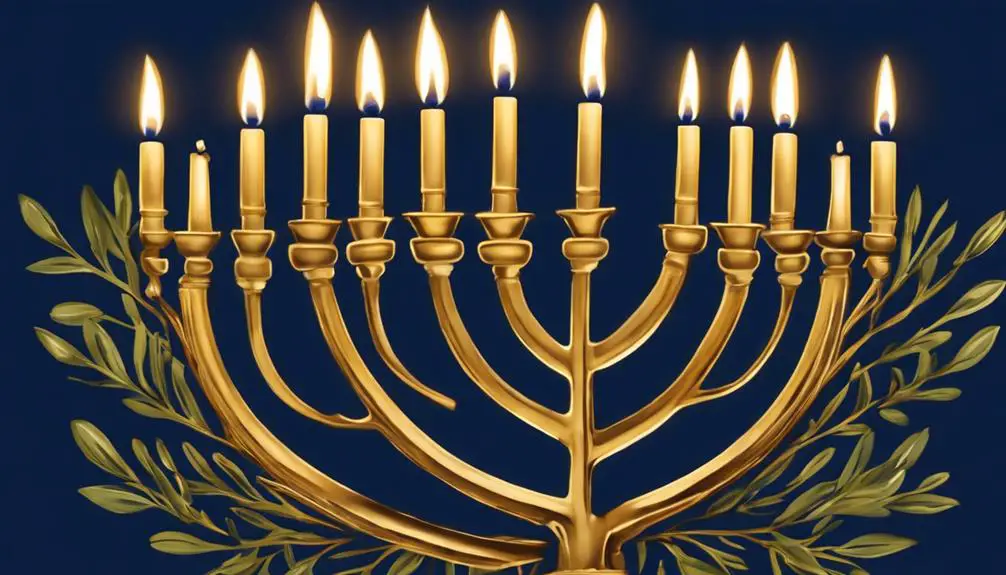
Moving from the Christian tradition's use of candlesticks to symbolize divine presence and guidance, we now turn our attention to the Menorah, a central emblem of Judaism, embodying a rich tapestry of spiritual and historical significance. This ancient symbol, first described in the Torah as a seven-branched candelabrum made of pure gold and placed in the sanctuary of the Tabernacle, represents not only the divine wisdom that illuminates the path of the faithful but also the enduring nature of Jewish faith through centuries of diaspora and change.
The Menorah's significance extends beyond its biblical origins, intertwining with Hanukkah traditions, where it symbolizes the miracle of the oil that burned for eight days in the rededication of the Second Temple in Jerusalem. This festival of lights showcases the Menorah in a slightly different form, known as the Hanukkiah, which has nine branches to accommodate the eight nights of Hanukkah plus a shamash, or helper candle, used to light the others. This adaptation highlights the Menorah's flexibility in maintaining its symbolic value while adapting to the evolving practices and traditions of Jewish life.
Modern interpretations of the Menorah delve into its representation of universal enlightenment and wisdom, extending its reach beyond Jewish religious practices to embody a broader message of hope and resilience. Its depiction in art, literature, and public monuments underscores its status as an icon of perseverance, enlightenment, and the unbroken continuity of the Jewish people.
In this light, the Menorah stands as a beacon of cultural and spiritual identity, its flames casting a glow that reaches far beyond its ancient origins to inspire generations in the modern world.
Light in the Darkness of Daniel
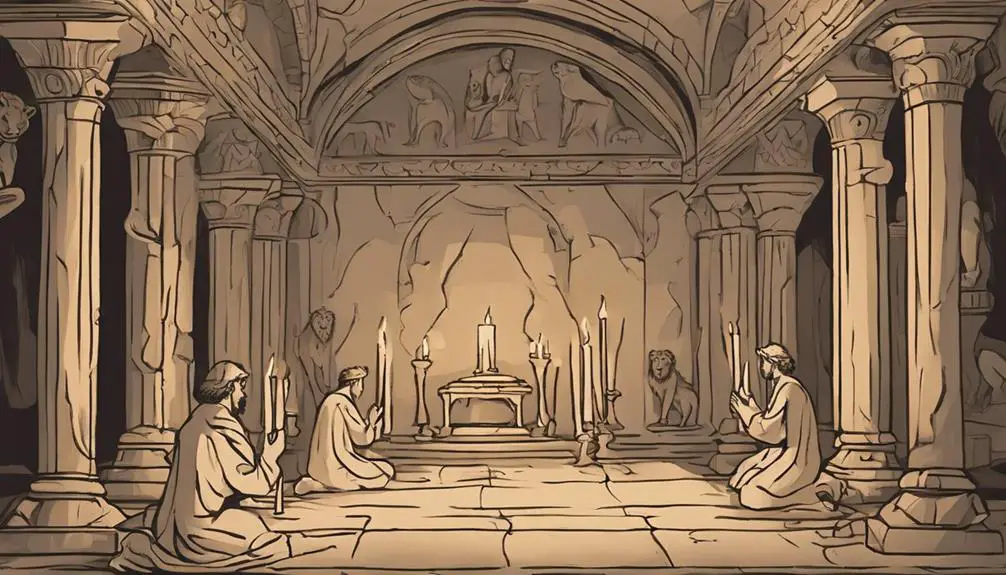
In the biblical book of Daniel, the motif of light serves as a powerful symbol of divine wisdom and revelation amidst the profound darkness of exile and oppression. You'll find that Daniel's experiences in Babylon, particularly his interactions with King Nebuchadnezzar, are pivotal moments where light—both literal and metaphorical—plays a crucial role.
One of the most striking examples is Nebuchadnezzar's dream, a narrative filled with interpretative challenges. Daniel's ability to interpret the dream when all others fail is a testament to the light of divine wisdom shining through him. This moment highlights not just the illumination of understanding but also the contrast between the divine enlightenment Daniel possesses and the darkness of confusion and fear that grips the Babylonian court.
Here's a brief overview to paint a clearer picture:
Aspect |
Significance |
|---|---|
Nebuchadnezzar's Dream |
A darkness that only divine light can interpret |
Daniel's Insight |
Represents the light of divine wisdom amidst exile |
Interpretative Challenges |
Symbolizes the struggle between light and darkness |
Divine Revelation |
The ultimate source of light in Daniel's narratives |
Exile and Oppression |
The backdrop of darkness against which light shines |
Through these elements, you're invited to see how the narrative skillfully uses the contrast between light and darkness to convey themes of divine guidance, wisdom, and revelation. The story of Daniel, therefore, isn't just about the events of a young man in exile but a deeper, symbolic exploration of how light—divine wisdom—pierces through the darkest moments of human history.
The Eternal Flame of Wisdom
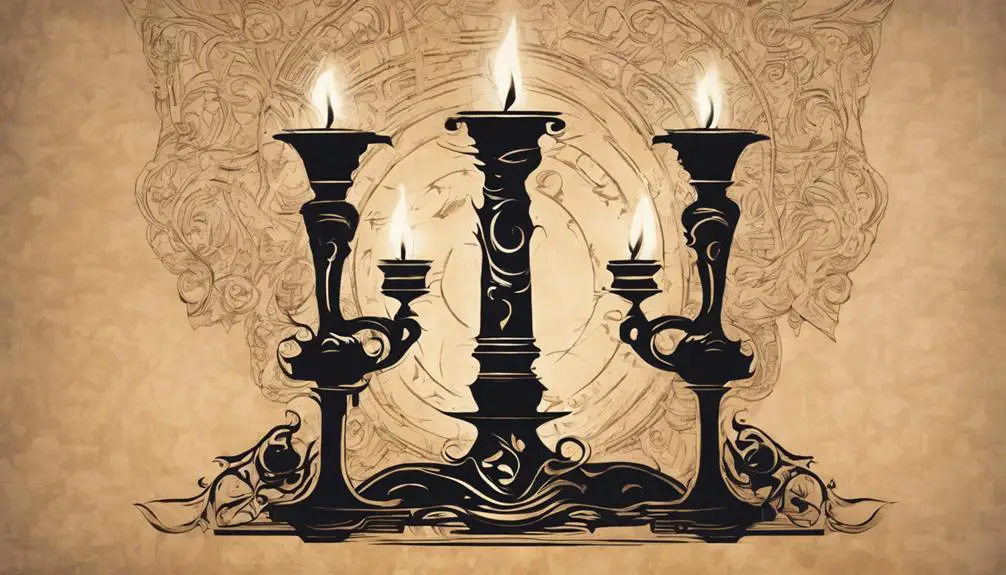
Building on the theme of light as divine wisdom in the narrative of Daniel, we now explore the concept of the Eternal Flame of Wisdom, a symbol that extends beyond individual moments of revelation to signify a continuous, unending source of divine insight. This metaphorical flame represents the perpetual guidance and enlightenment available to those who seek understanding beyond the superficial. It's not simply a beacon in moments of darkness but a constant, unwavering light that offers wisdom's illumination to guide the Enlightenment path.
You'll find that the Eternal Flame of Wisdom isn't confined to a physical manifestation but thrives within the teachings and parables scattered throughout the biblical texts. It echoes the notion that wisdom, once ignited within the human soul, burns eternally, offering light to navigate the complexities of life. This flame encourages a relentless pursuit of knowledge, urging one to delve deeper into the mysteries of existence and the divine.
The concept also serves as a reminder of the responsibility that comes with enlightenment. To carry wisdom's flame is to commit to a life of introspection, ethical conduct, and service to others. It's a path that demands vigilance, for the light of wisdom can only illuminate the way if it's continually fueled by a sincere quest for understanding.
In essence, the Eternal Flame of Wisdom transcends the ages, reminding us that while the quest for knowledge is endless, so too is the light that guides it. It's a profound symbol of hope, resilience, and the unbreakable bond between the divine and the quest for enlightenment.
Frequently Asked Questions
How Did the Design and Use of Candlesticks in Biblical Times Influence Modern Religious Practices?
You'll find that the design and use of candlesticks from historical periods have deeply influenced modern religious practices.
Candlestick symbolism, rooted in ancient traditions, has seamlessly transitioned into modern adaptations, enriching ceremonies and enhancing spiritual atmospheres.
These adaptations aren't merely aesthetic; they carry profound meanings, connecting believers to their faith's heritage.
Are There Any Specific Prayers or Rituals Mentioned in the Bible That Involve the Use of Candlesticks?
You're looking into whether specific prayers or rituals involving candlesticks are mentioned in sacred texts. While candlestick symbolism and prayer timing are deeply rooted in tradition, direct references to using candlesticks in prayers or rituals are scarce.
It's more about the symbolic representation of light and guidance. Analyzing texts, you'll find that candlesticks mainly symbolize enlightenment and presence, rather than being central to the rituals or prayers themselves.
How Have the Materials and Crafting Techniques for Making Candlesticks Evolved From Biblical Times to the Present Day?
Imagine candlesticks evolving over millennia. Initially, craftsmen faced material scarcity, shaping candlesticks from what was scarce but precious. As techniques evolved, so did materials, from simple clays to metals and beyond, reflecting not just artistry but the environmental impact of their times.
Today, you'd find a shift towards sustainable practices, marrying age-old traditions with modern concerns. This journey from basic to intricate encapsulates a fascinating evolution, driven by necessity, creativity, and now, environmental consciousness.
Can You Find Examples of Candlesticks Being Used in Non-Religious Contexts in the Bible?
You'll find that in the Bible, candlesticks aren't just limited to religious use. They played a role in domestic lighting, illuminating homes and spaces beyond the temple. This presence highlights their utility in everyday life, not just ceremonial.
Moreover, artistic depictions of scenes from this era often include candlesticks, underscoring their importance in daily and social contexts. These examples show candlesticks' versatility and significance throughout history, beyond their sacred use.
What Is the Significance of the Number of Branches on Candlesticks in Different Biblical Stories or Symbols?
You're diving into the realm of artistic symbolism and numerological interpretations without the direct biblical context. The number of branches on candlesticks often carries significant weight, symbolizing various concepts or narratives.
Each branch's presence or absence can be meticulously analyzed for deeper meanings, revealing layers of thought in historical or symbolic narratives. This approach allows for a scholarly and detailed exploration of symbols, offering insights into their cultural or spiritual significance.
Conclusion
In conclusion, you've navigated through the biblical labyrinth of candlesticks, uncovering their profound symbolism and immutable presence across various scriptures.
From the Golden Lampstand in Exodus to the enigmatic candlesticks in Revelation, these luminaries aren't just mere objects but beacons of divine wisdom and eternal light.
As you've seen, they're a thread weaving through the tapestry of biblical narratives, illuminating the path from historical rituals to mystical revelations, embodying the eternal flame of wisdom that guides through darkness.

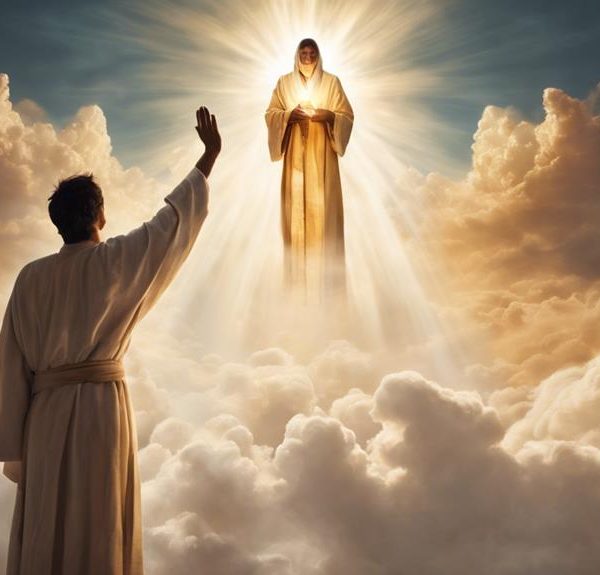

Sign up